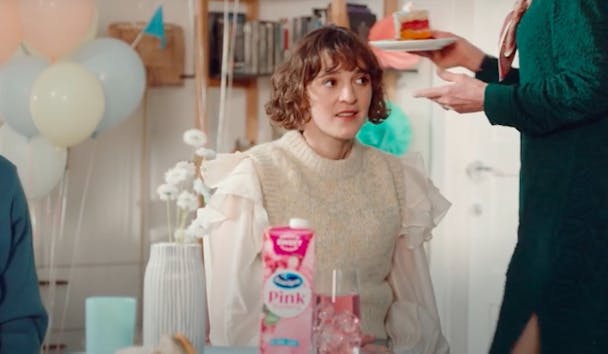When it comes to sustainability, agencies need to offer action as well as words
The average production project releases the equivalent of 6.2 tonnes of CO2. Thankfully, says Gemma Day at Media Bounty, there are plenty of ways to reduce it – just look at the example our agency has set.

No single-use straws or plates were used in the Ocean Spray advert in a bid to normalize sustainable practices / Media Bounty via Youtube
Sustainable advertising. Two words adland rarely used side by side, until recently.
Advertising influences consumers, how they behave, what they buy, and the decisions they make. With this power comes responsibility and the advertising industry must champion carbon reduction.
My advertising journey started nearly seven years ago. Entering the industry was exciting and eye-opening. Traveling to shoots across the UK most weeks, I rarely considered my carbon footprint. And as I began to, I felt powerless to change it. I thought this was just the way things were in advertising.
The average carbon dioxide equivalent (CO2e) of a production project is 6.2 tonnes. Almost enough to heat three UK households for a year. Read that again. Now, think about how many campaigns run every year.
So, how can advertising contribute to a more sustainable future?
Explore frequently asked questions
Production reduction
A misconception is that materials cause the biggest impact. But a huge 72.12% of Production CO2e is from travel and transport – 83.50% of that is from air travel.
“But how do I shoot a campaign for sun cream in the drizzly UK? Or, a travel insurance TV ad without doing any traveling?” some might ask.
But aren’t we all familiar with green screen, CGI, and animation by now? Virtual production is becoming increasingly popular. Using an LED screen, virtual cameras, and interactive lighting can transport us to that desired European beach scene – in a cost- and carbon-friendly way.
I’d always recommend working with local cast and crew – cutting emissions, supporting economies, and opening up local intel.
But where travel is unavoidable – the key lies in the word reducing.
Advertisement
A petrol car emits 170g CO2e per km, while National Rail only emits 35g. A short-haul flight emits 151g CO2e per km as opposed to a ferry at 19g or Eurostar at 4g. Reducing travel will noticeably reduce the industry’s impact. But what more can we do?
Materials have the second biggest impact – and yes, this includes catering. We’ve all heard about the environmental benefits of reducing our meat consumption, but it’s the single biggest thing individuals can do to reduce carbon impact. Beef emits 39kg CO2e per kg of product, while tofu emits only 3.2kg. It can be easy to see how quickly these numbers add up when catering for large crews.
Another key area is props. When sourcing, try to avoid props from overseas, limit on-set wardrobe options, and avoid single-use items.
When talking about sustainable production, most people think about what’s behind the camera. But what about what we’re showing on screen?
Our campaign for Ocean Spray is a perfect example. The birthday scene’s bunting and party food were all reusable where possible and we had no straws or single-use crockery. Not only does this reduce our impact, but it normalizes more sustainable choices.
Advertisement
Be the change
Advertising by nature creates an idealistic, utopian world – where romantic interests surround you after you apply a fragrance, or you are bestowed with the ability to fly after sipping an energy drink. Shouldn’t our idea of utopia be to live in a sustainable world?
Being an integrated producer for a B Corp agency, the CO2e of our campaigns is always at the front of my mind. I’m so proud to say that in 2023 our CO2e per campaign was 0.518 tonnes.
Together, we can make this the norm. We’re key in influencing how consumers behave and what they buy. Imagine the impact if we all used this unique influence to create a more positive future. What’s more, I can guarantee that you, your team, and your clients will feel prouder about your work than ever before.
I’d recommend agencies interested in reducing their footprint to work with AdGreen for every project to see and understand where your emissions are coming from. Then, use this information to reduce where possible, and offset any unavoidable emissions.
There are also so many training opportunities on sustainable production, many of which are free. I’d recommend AdGreen Sustainable Production and Albert Sustainable Production. Share your knowledge with your colleagues, clients, friends, and family.
Knowledge is power, after all.
Suggested newsletters for you
Content by The Drum Network member:

Media Bounty
We’re Media Bounty. And we’re working to become the UK’s leading ethical independent creative agency by 2026.
Our team delivers award-winning strategy,...

